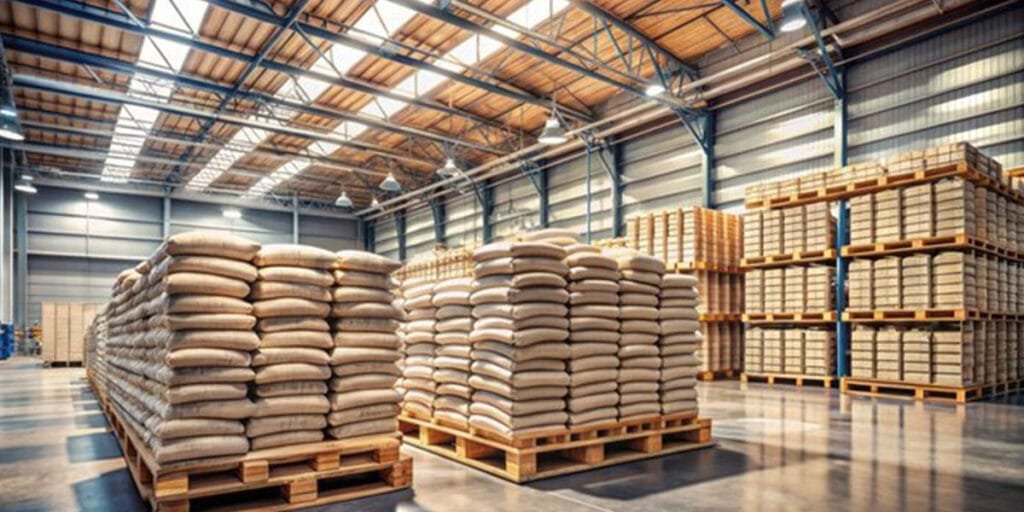
27 Feb How Many 80lb Bags Of Concrete In a Cubic Yard
When planning a concrete project, knowing how many 80lb bags of concrete you’ll need is crucial. A cubic yard equals 27 cubic feet, while each 80 lb. bag provides about 0.6 cubic feet. This means you’ll need approximately 45 bags to fill one cubic yard. Accurate calculations save time and prevent material shortages.
Calculating the Number of 80lb Bags of Concrete
What is a cubic yard in concrete terms?
When you hear “cubic yard,” think of a cube that measures three feet on each side. This is a standard unit of volume in construction. It’s essential for managing materials like concrete, soil, or gravel. A cubic yard is commonly used to calculate the amount of concrete needed for projects such as driveways, foundations, and sidewalks. It helps you plan better and avoid running out of materials mid-project.
Here’s a quick breakdown of how cubic yards are used:
- Concrete Pouring: For slabs, patios, and other structures.
- Excavation: To measure the volume of earth to be moved.
- Landscaping: For soil, mulch, or gravel calculations.
Understanding this unit ensures you can estimate your material needs accurately.
How much volume does an 80 lb. bag of concrete provide?
An 80 lb. bag of concrete mix gives you about 0.6 cubic feet of material. This is a standard measurement, but it’s always a good idea to check the packaging since some brands may vary slightly. For example, depending on the thickness of your pour, one bag can cover:
| Thickness (inches) | Coverage (square feet) |
|---|---|
| 2 | 3.6 |
| 4 | 1.8 |
| 6 | 1.2 |
Knowing this helps you calculate how many bags you’ll need for your project.
Step-by-step guide to calculating the number of bags
Figuring out how many 80lb bags of concrete you need is simple if you follow these steps:
- Measure your project dimensions: Length, width, and thickness in feet.
- Calculate the volume: Multiply length × width × thickness to get the volume in cubic feet.
- Convert to cubic yards: Divide the total cubic feet by 27 (since 1 cubic yard = 27 cubic feet).
- Determine the number of bags: Divide the cubic yard volume by 0.6 (the volume of one 80 lb. bag).
- Round up: Always round up to ensure you have enough material.
For example, if your project requires 1 cubic yard of cement, you’ll need about 45 80lb bags of concrete. This calculation ensures you’re prepared and avoids last-minute trips to the store.

Quick Reference for 80lb Bags of Concrete
Chart for different project sizes and thicknesses
When planning your project, it helps to know how many bags of concrete you’ll need based on size and thickness. Here’s a quick chart to guide you:
| Project Size | Recommended Bag Size | Purpose |
|---|---|---|
| Small Projects | 60-pound bags | Suitable for patching, leveling, or small footings. |
| Medium-Sized Projects | 80-pound bags | Ideal for building small patios or garden paths. |
| Large-Scale Projects | 100-pound bags | Perfect for constructing foundations, walls, driveways, or slabs. |
For most medium-sized projects, 80 lb. bags of concrete are the go-to choice. They’re manageable to handle and provide enough material for tasks like patios or walkways.
Adjusting for waste and overage
Concrete projects rarely go perfectly as planned. You should always account for waste and overage to avoid running short. A good rule of thumb is to add 5% to 10% for waste and 3% to 5% for overage.
| Factor | Percentage Range |
|---|---|
| Waste | 5% to 10% |
| Overage | 3% to 5% |
For example, if your project requires 1 cubic yard of cement, plan for an additional 5% to 10% of material. This ensures you have enough to cover mistakes or unexpected gaps.
Tip: Always round up when calculating the number of bags. It’s better to have extra than to run out mid-project.
Scaling up or down for your project
The size of your project determines how many bags you’ll need. For smaller tasks, like patching or leveling, 60-pound bags might be more practical. Medium-sized projects, such as garden paths, typically require 80lb bags of concrete. For large-scale jobs like driveways or foundations, consider using 100-pound bags to reduce the total number of bags needed.
Scaling your materials correctly saves time and effort. If you’re unsure, consult the chart above or ask a professional for advice.
Practical Tips for Using 80lb Bags of Concrete
Ensuring accurate measurements for your project
Getting your measurements right is the first step to a successful concrete project. You don’t want to end up with too little or too much material. Using the right tools can make this process easier and more precise. Here’s a quick guide to some tools and features that can help:
| Tool/Feature | Description |
|---|---|
| Cut & Fill tool | Calculates the volume of material needed to excavate or add to achieve the desired grade for concrete projects. |
| Add Depth tool | Estimates material volumes needed to cover an area at a specified depth, effective for both flat and sloped sites. |
| Surface Mesh view | Generates a 3D surface map of the area’s shape and elevation for accurate terrain representation. |
| Topography/Contour view | Provides a detailed 3D visualization of the site’s topography, capturing elevation points for grading and drainage planning. |
| View in 3D | Creates a 3D model of the project, helping communicate plans and measurements clearly to clients. |
| Organize your files | Allows saving and organizing measurements within the app for easy reference. |
| Add labels & backgrounds | Enables labeling points of interest and overlaying measurements on aerial shots for better visualization. |
These tools ensure you calculate the number of bags you’ll need accurately, whether you’re working with one yard of concrete or a larger project.
Proper storage of unused 80 lb. bags of concrete
Unused concrete bags can last a while, but only if you store them properly. Humidity is the biggest enemy. If moisture seeps into the bag, the mix can harden and become unusable. A bag left in a garage, for example, might turn into a solid brick after just one summer-to-winter cycle.
To avoid this, keep your 80lb bags of concrete in a cool, dry place. Use a plastic sheet or tarp to protect them from moisture. If you’re storing them for an extended period, consider placing the bags on a wooden pallet to keep them off the ground. This simple step can extend their usability and save you money in the long run.
Ordering extra to account for errors or waste
Concrete projects rarely go perfectly. Mistakes happen, and you might need more material than expected. Always order a little extra to account for errors or waste. A good rule of thumb is to add 5% to 10% more than your calculated amount.
For example, if your project requires one cubic yard of cement, plan for an additional 5% to 10%. This ensures you won’t run out of material mid-project. Running short can delay your work and lead to uneven results. It’s always better to have a few extra bags than to scramble for more at the last minute.
Tip: If you have leftover concrete, you can use it for smaller projects like stepping stones or garden edging.
To fill a cubic yard, you’ll need about 45 80lb bags of concrete. Accurate calculations ensure your project stays on budget and on schedule. They also prevent weak spots or unnecessary costs. Always plan for waste and store extra concrete properly. This way, you’ll avoid delays and achieve a durable, successful result.


